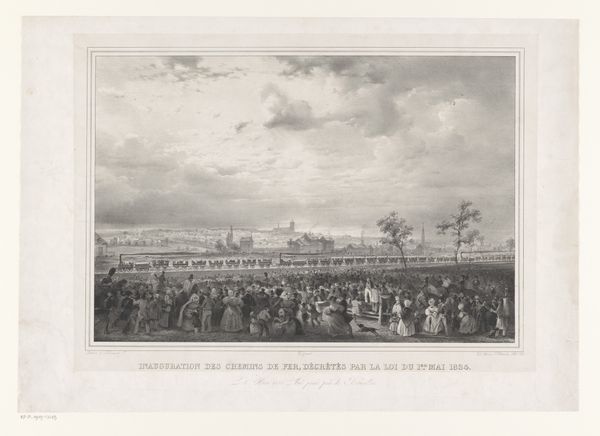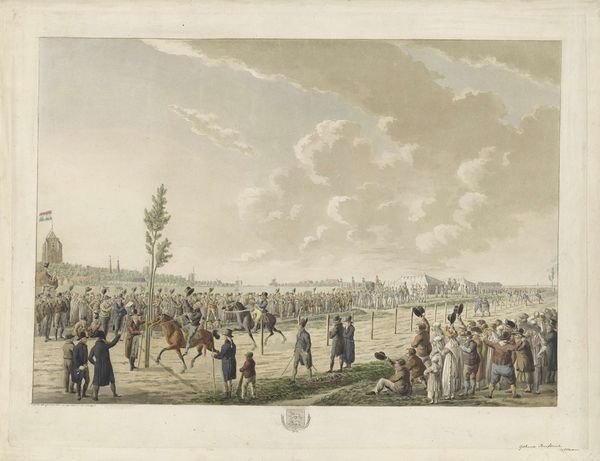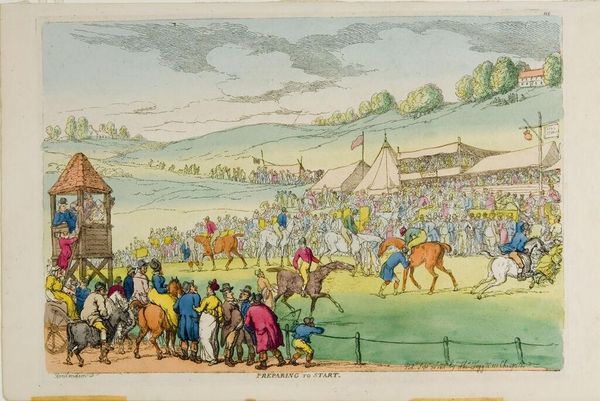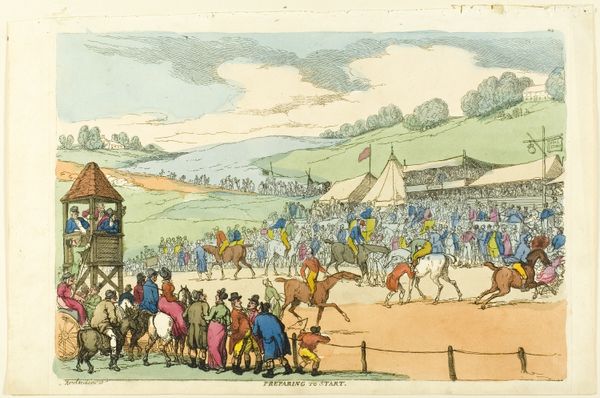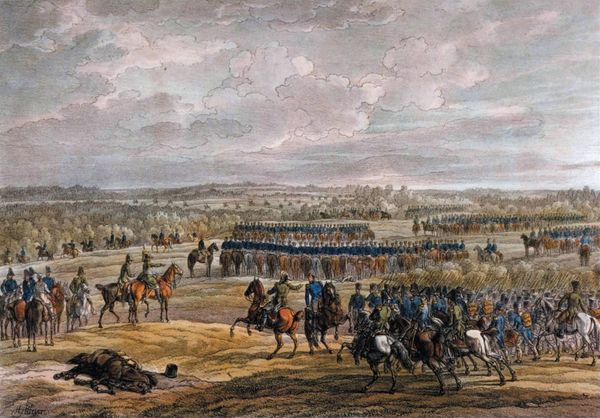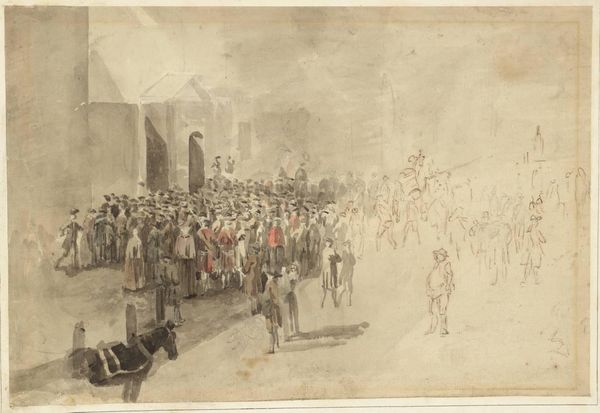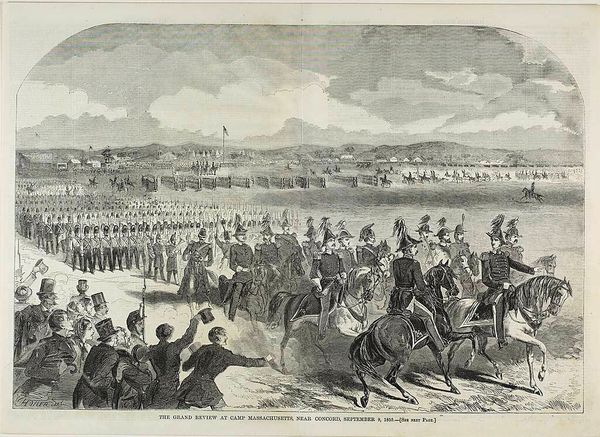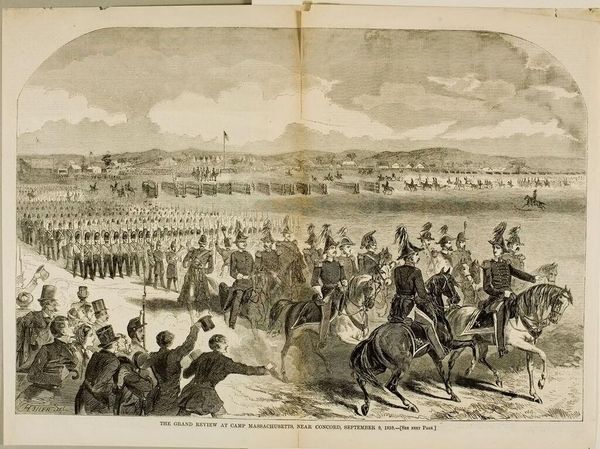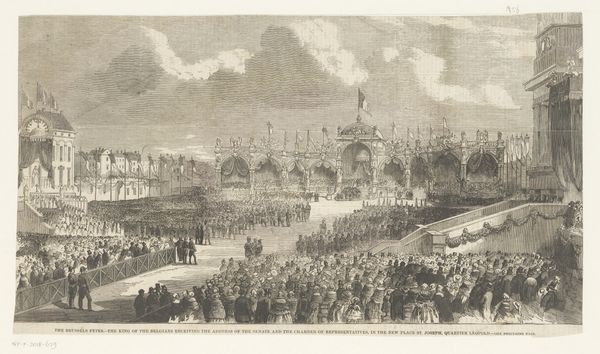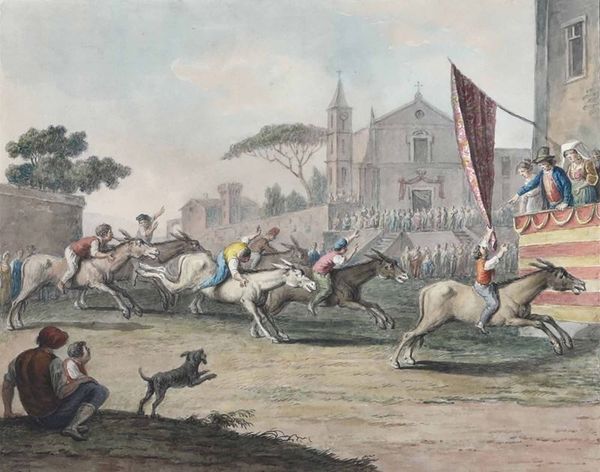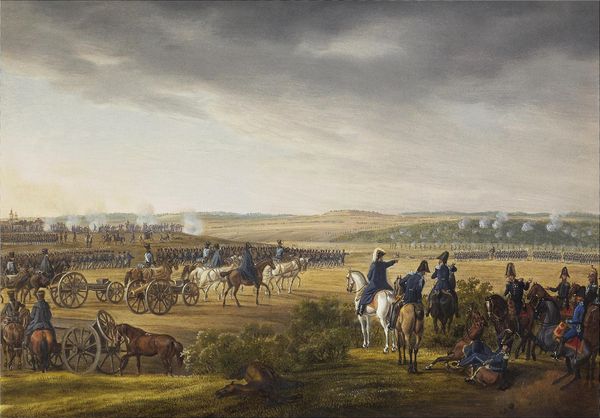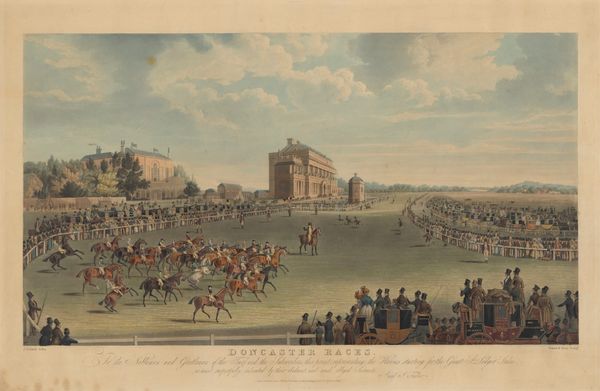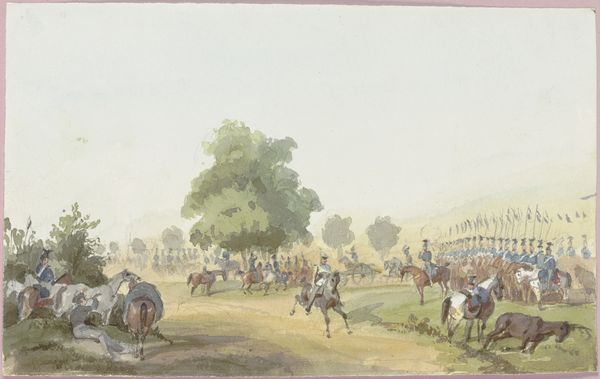
painting, oil-paint
#
painting
#
oil-paint
#
landscape
#
oil painting
#
genre-painting
#
history-painting
#
academic-art
#
realism
Dimensions: height 53.5 cm, width 70 cm, depth 5.7 cm
Copyright: Rijks Museum: Open Domain
Curator: Here we have an oil painting entitled "The Burial of Father Joannes Vitus Janssen (1803-43) at Paramaribo," dating from 1843 to 1845. Editor: Immediately, I'm struck by the materiality on display here – the rendering of what seems like a sweltering landscape and the contrasting textures of the gathered crowd. The division of pictorial space almost flattens the depth – how would you parse the artist’s approach to spatial dynamics? Curator: Indeed, it’s interesting. The composition presents a stark contrast between the foreground’s crowded scene and the flat, almost geometric planes of the landscape. I'm intrigued by how the anonymous artist manipulates linear perspective to compress space, creating a slightly unsettling effect. The verticality of the cypress trees mimics that of the cross, lending both structural and symbolic importance. Editor: It's tempting to consider the socioeconomic status implied by the carriages versus those figures likely traveling on foot. Considering it’s likely a commission of this event – do you read any critique here of this social disparity through its careful rendering on the canvas? What kind of labor went into producing this kind of pictorial record? Curator: Certainly. One could argue that the inclusion of these details is deliberate, presenting a microcosm of the social strata present in Paramaribo at the time. However, interpreting it as critique relies heavily on speculation, absent of supporting documentation, in my opinion. More clearly, I am interested in how the painter uses light and shadow to define the central figures—a formal tool to direct our gaze and heighten the emotional intensity of the event. The formal repetition of shapes and the distribution of color lend the composition visual harmony, in line with Academic art standards. Editor: The production and procurement of materials— pigments, canvas, brushes—in 19th-century Paramaribo suggest networks of colonial trade and unequal power relations in the Dutch colony of Suriname. We would need to research what specific craft practices enabled the creation of this artwork – and who had access to these artistic means. Curator: Agreed; such research could unveil further layers of meaning within the work. However, returning to the image itself, let us acknowledge that the overall formal structure reinforces a specific interpretation of the event – a curated perspective, shall we say? Editor: Yes. For me, it opens more questions about what wasn't depicted.
Comments
No comments
Be the first to comment and join the conversation on the ultimate creative platform.
